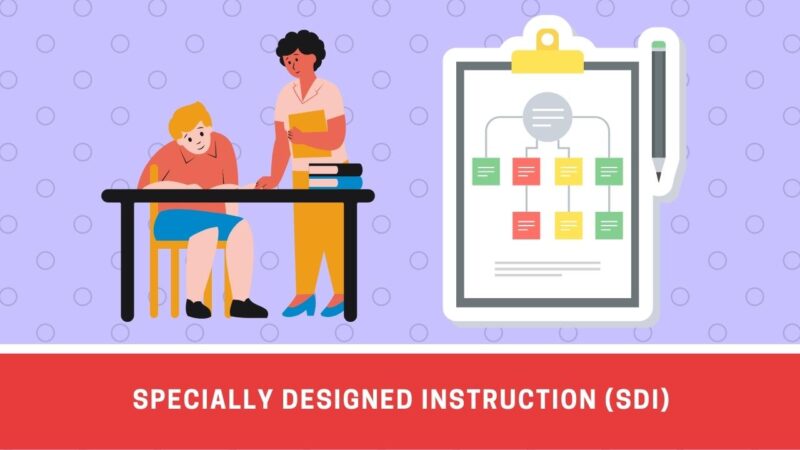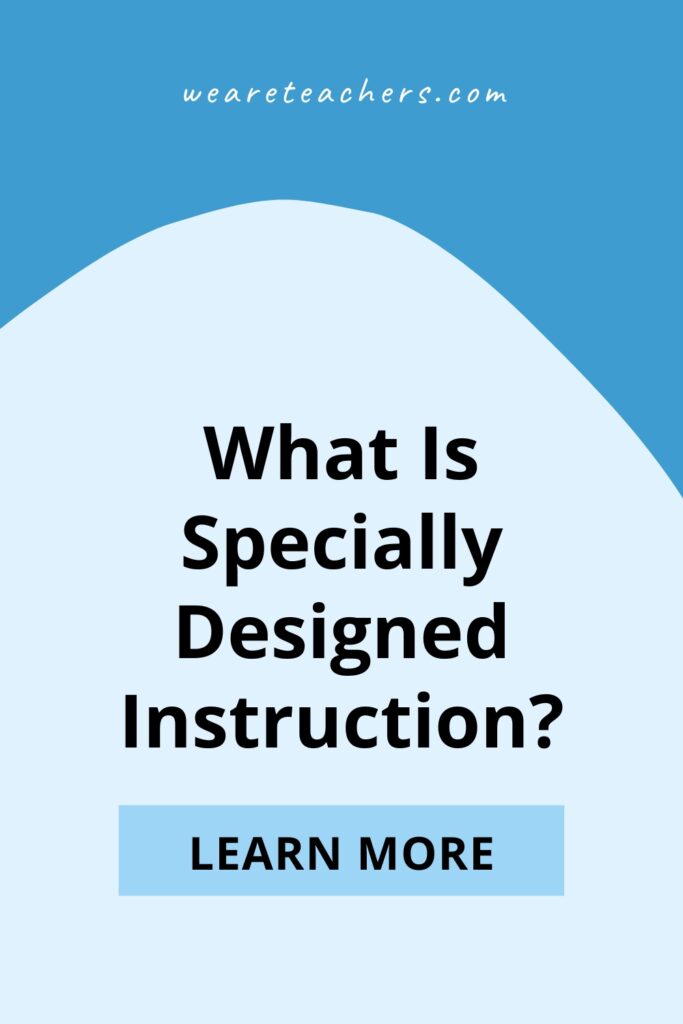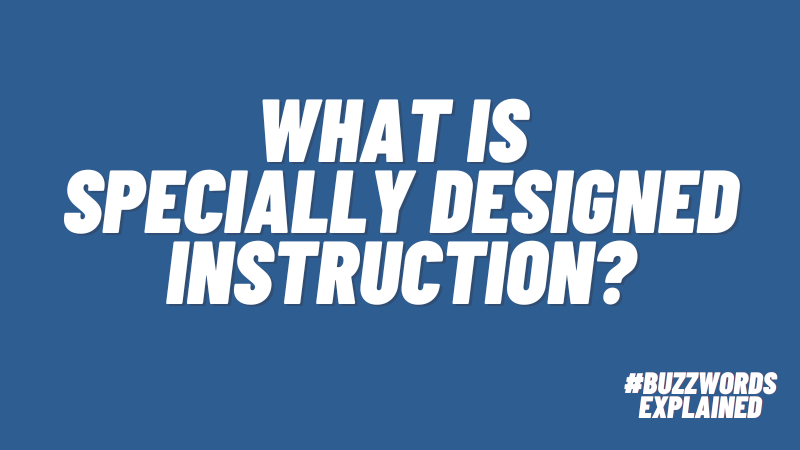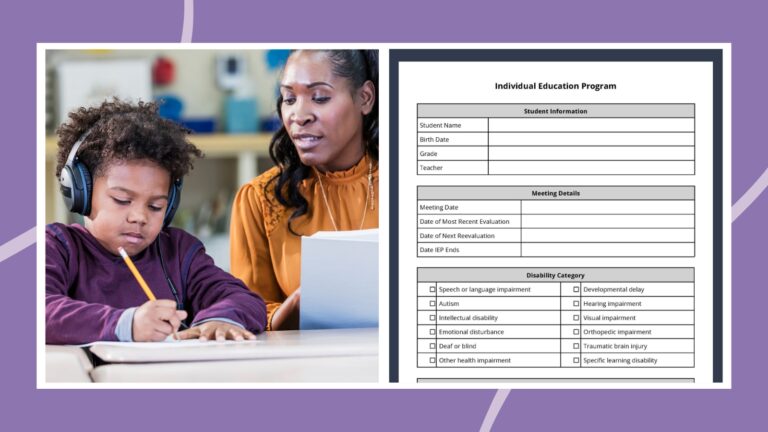When a student receives special education services, they receive “specially designed instruction.” That could be speech therapy to teach them how to correctly say their sounds, or it could be academic instruction in the self-contained classroom from a special education teacher. But what is specially designed instruction and why is it important for kids with disabilities?
Why do IEPs include specially designed instruction?
The Individuals With Disabilities Education Act (IDEA) defines special education as “specially designed instruction,” or SDI, that is free to parents and meets the unique needs of a child with a disability. The instruction can take place anywhere, from general education to the child’s home, but it’s specifically designed only for that child.
Some specific types of SDI:
- Speech and language therapy
- Occupational therapy
- Community-based training
- Vocational education
- Adaptive physical education
SDI is provided so that the student can meet the educational standards that apply to all students in a district. So, receiving vocational education may be provided to help a child with a disability meet career and independent living outcomes set for all students.

Source: Number Dyslexia
Who decides what SDI a student gets?
Every IEP includes a reason for why a student requires specially designed instruction in a certain area—academic, speech and language, fine motor, gross motor. Then, the IEP team decides what SDI looks like for each student and writes it into the IEP. SDI can address everything that a child could be taught, from behavior to social skills to reading and math. But what SDI a student actually receives depends on their disability and how it impacts them at school.
Read more: What Is an IEP?
What are features of SDI?
Specially designed instruction:
- Is provided by special education teachers or related service providers (like therapists)
- Is delivered in an explicit, systematic manner
- Can be provided in any educational setting (according to the child’s IEP and LRE)
- Directly addresses goals in the student’s IEP
- Is closely monitored to make sure that the student is mastering their goals and making progress
- Can address any area of need, including health, communication, behavior, functional, and academic
- Does not involve lowering standards or expectations for the student; ambitious goals
What does NOT qualify as specially designed instruction?
Specially designed instruction is NOT:
- Differentiation
- Providing accommodations
- Providing modifications
- Active learning strategies
How is SDI different than core instruction or MTSS?
The implementation of specially designed instruction happens through the child’s IEP. It teaches specific skills that the student doesn’t yet have but needs in order to access the curriculum. A qualified special education teacher, or provider, like a speech therapist, delivers SDI. That said, SDI can go hand-in-hand with general education strategies, like Universal Design for Learning and PBIS. It also overlaps with general education because it aligns with standards and formative assessments given to general education students.
Similar to MTSS (multi-tiered system of support), where students receive intervention using research-based practices, SDI can involve instruction through a program, Orton-Gillingham for reading, or an evidence-based practice, like a questioning strategy, to teach skills. The difference is that the program is provided through the student’s IEP rather than through an intervention plan. To qualify for an IEP with a learning disability, for example, a child will need to have received interventions, which can be the same as SDI, as part of the evaluation process. So, their IEP may continue the same SDI but through the special education teacher rather than the interventionist.
Read more on Research Based Practices.
What are some examples of SDI that an IEP could include?
Specially designed instruction that can be included in an IEP:
- Learning how to use a visual schedule (a visual schedule is an accommodation; learning how to use it is specially designed instruction)
- Social skill instruction using an evidence-based curriculum
- Word reading or phonics instruction
- Pre-teaching, reteaching, or repetition of a lesson
- Teaching a student to use choice cards to communicate their preferences
- Self-regulation instruction using the Zones of Regulation
- Teaching through repetition using video or audio recordings
- Teaching using mnemonic strategies
Watch a video about specially designed instruction.
Read the IDEA description of specially designed instruction.
Resources
The Wrightslaw blog is the definitive place to go to research special education law.
The Council for Exceptional Children has resources about special education.
Have questions about specially designed instruction? Join the WeAreTeachers HELPLINE group on Facebook to exchange ideas and ask for advice!
Learn more about reading practices you can use for SDI in this What Is the Science of Reading? article.


